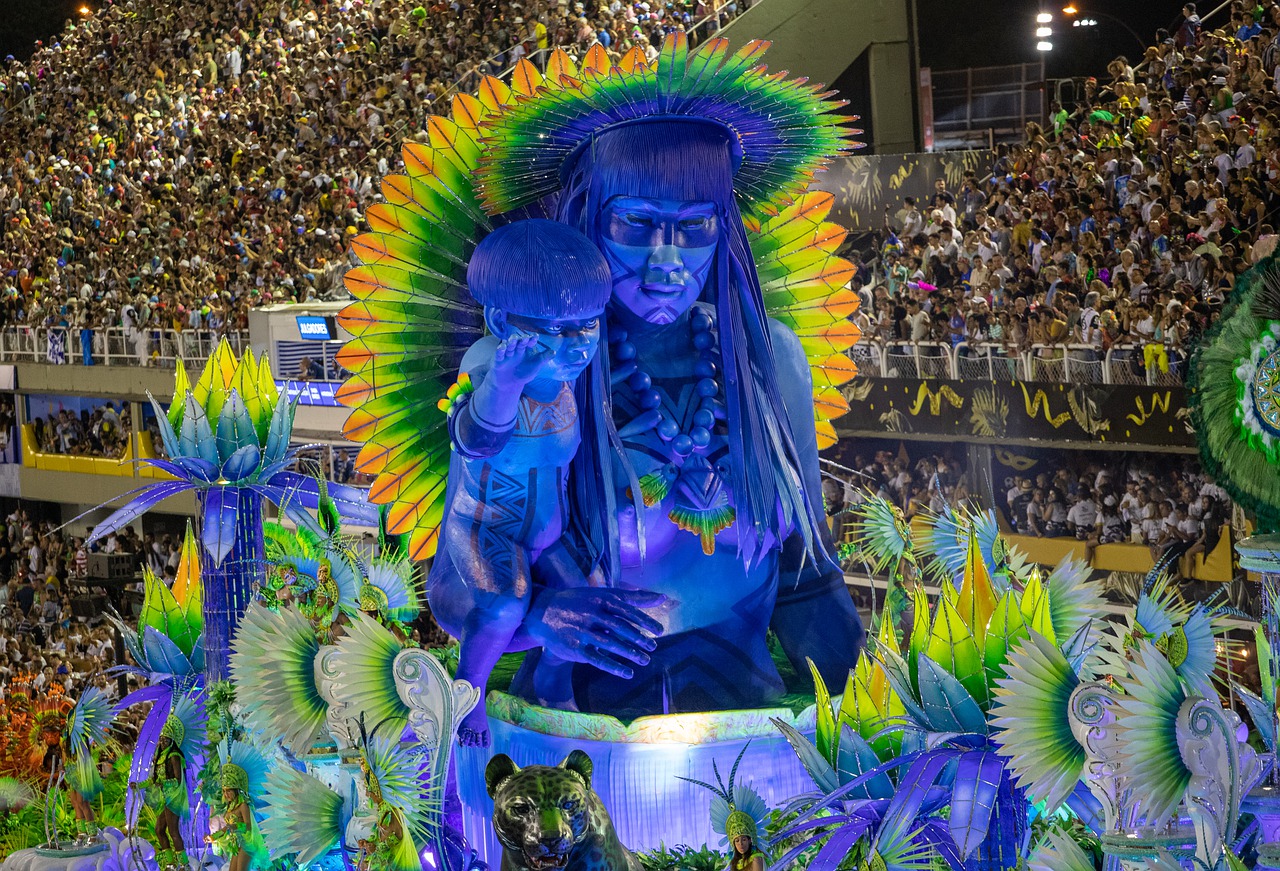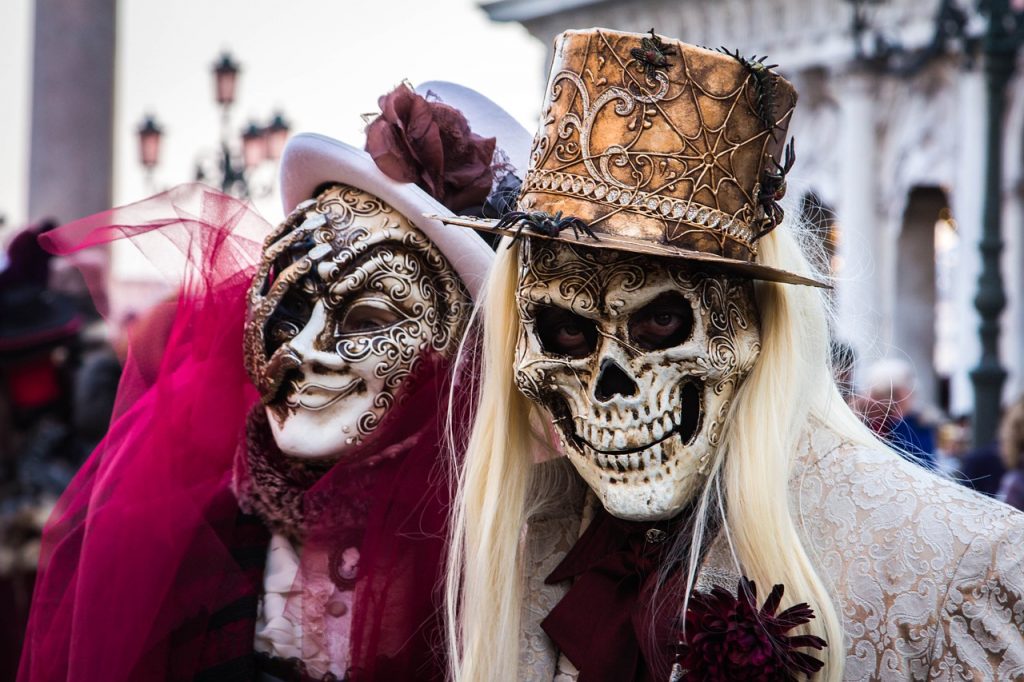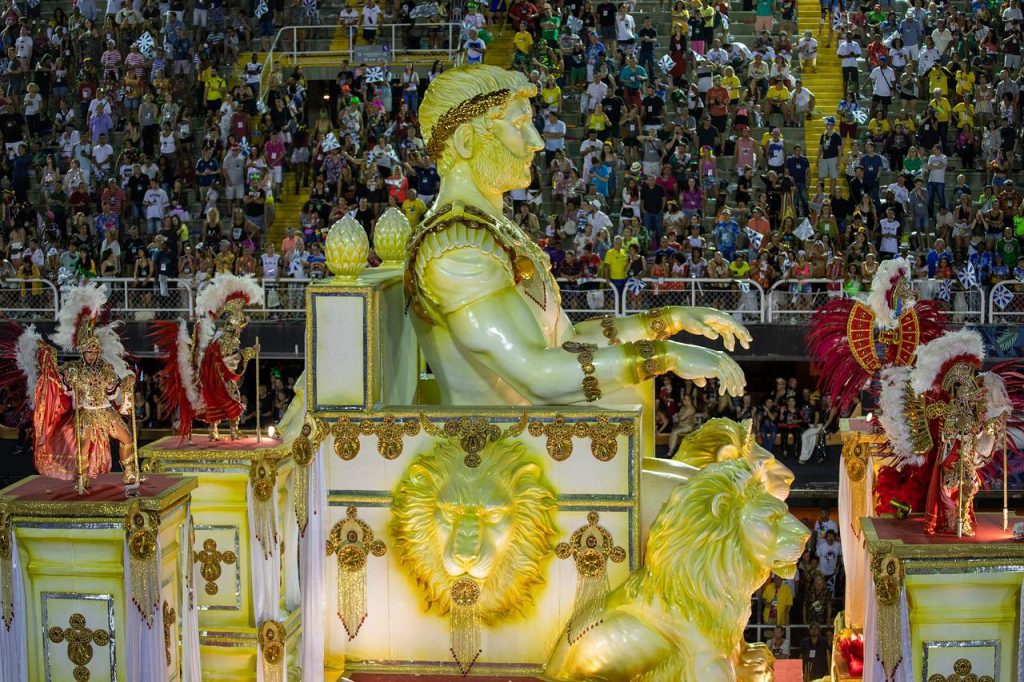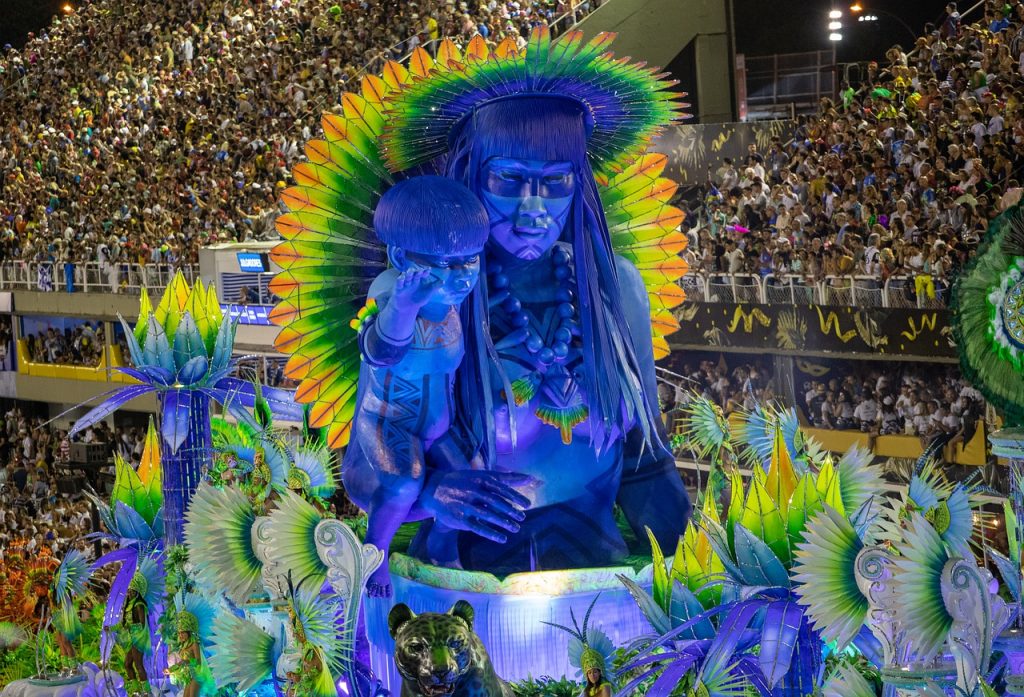
Experience Brazil’s Magnificent Mardi Gras Carnival
Brazil is almost synonymous with the idea of carnivals; bright and colourful costumes, upbeat music and incredible floats parading through the streets. Each year, Rio de Janeiro plays host to the largest carnival in the world, with half a million foreign visitors and over two million people taking the streets each day from the Friday before Ash Wednesday, up until the climax of the celebrations on Mardi Gras (known in the UK as Shrove Tuesday)
Neighbourhoods all over Brazil will throw street parties, where local people will enjoy concerts and festivities while dressed in beautiful and elaborate costumes. The highlight of Brazil’s annual carnival is the Sambodromo Parade, where the country’s top samba schools perform in front of an audience of millions to compete for the title of Grand Champion.

The History of Brazil’s Carnival
Mardi Gras is thought to have originated from a Greek spring festival that was held each year to honour Dionysus, or as he was known by the Romans, Bacchus, the god of wine and good times. The spring festival was later modified by the Roman Catholic Church to become an event that marked the beginning of Lent. The word ‘Carnival’ derives from Carnem-levamen (or levare) which in Latin means ‘to remove the meat’, referring to the act of enjoying one last day of celebration and luxury before the lead-up to Easter Sunday.

The first pre-Lent festivals were held in Italy, where carnival-goers would dress up in costumes and wear Venetian masks to conceal their identities; this meant that the festivals were one of the only times when upper and lower classes would interact and celebrate together. The festivals spread to other European countries. Carnivals in Brazil date back to 1723, when Portuguese immigrants from Açores, Madeira and Cabo Verde brought the festivities of their pre-Lent festival, the Entrudo, with them.
The original Carnivals of Rio de Janeiro were simple affairs, where everyone would gather in the streets for giant water fights. People would throw buckets of water and limes, and anyone and everyone was a potential target. In fact, it was recorded that one woman was even arrested for throwing a lime at Dom Pedro I’s escorts in 1855.








